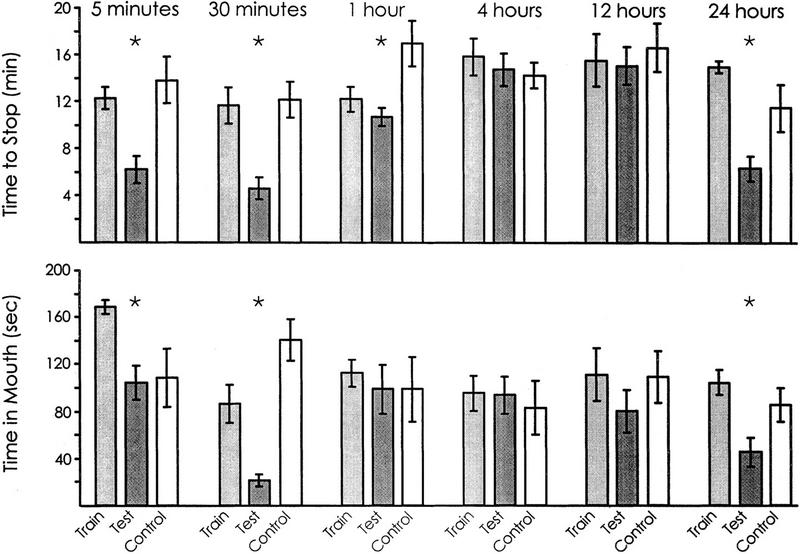Figure 1.

Memory after different time periods. Animals were trained until they stopped responding to food and then were tested at various intervals following the end of the training. For 5-min testing, n = 5; for 30-min testing, n = 9; for 1-hr testing, n = 12, for 4-hr testing, n = 13, for 12-hr testing, n = 6; for 24-hr testing, n = 6. Two parameters were measured during the training and during the subsequent test: (1) the time to stop responding to the food (top) and (2) the time that food was in the mouth during the first 5 min (bottom). All tests were run along with blind controls (for 5-min test, n = 5; for 30-min test, n = 5; for 1-hr test, n = 7; for 4-hr test, n = 4; for 12-hr test, n = 6; for 24-hr test, n = 6). The figure shows the means and s.e.s of the values during the initial training, during the subsequent test, and for the controls run along with the test. Asterisks (*) mark time intervals in which there was a significant difference between the values observed between the original training and the subsequent test (e.g., memory was shown).
